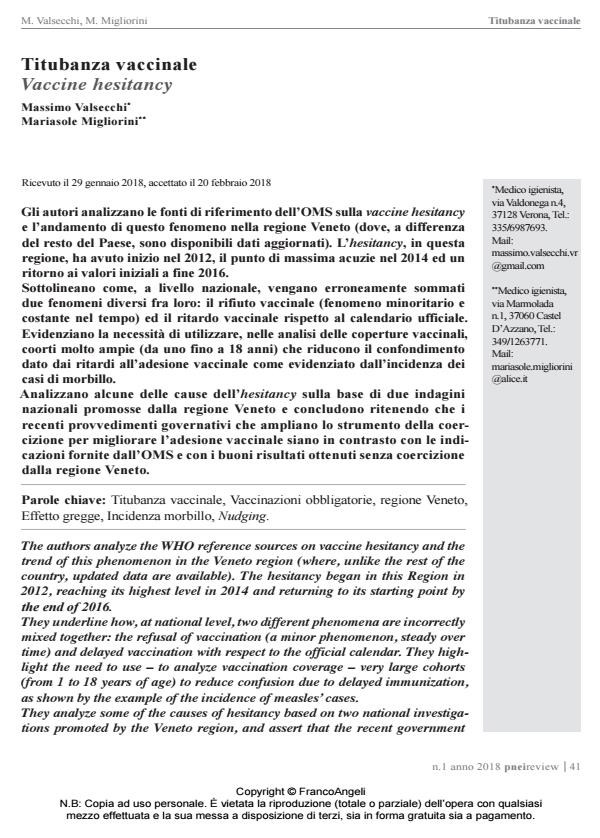Vaccine hesitancy
Journal title PNEI REVIEW
Author/s Massimo Valsecchi, Mariasole Migliorini
Publishing Year 2018 Issue 2018/1
Language Italian Pages 13 P. 41-53 File size 1200 KB
DOI 10.3280/PNEI2018-001004
DOI is like a bar code for intellectual property: to have more infomation
click here
Below, you can see the article first page
If you want to buy this article in PDF format, you can do it, following the instructions to buy download credits

FrancoAngeli is member of Publishers International Linking Association, Inc (PILA), a not-for-profit association which run the CrossRef service enabling links to and from online scholarly content.
The authors analyze the WHO reference sources on vaccine hesitancy and the trend of this phenomenon in the Veneto region (where, unlike the rest of the country, updated data are available). The hesitancy began in this Region in 2012, reaching its highest level in 2014 and returning to its starting point by the end of 2016. They underline how, at national level, two different phenomena are incorrectly mixed together: the refusal of vaccination (a minor phenomenon, steady over time) and delayed vaccination with respect to the official calendar. They highlight the need to use - to analyze vaccination coverage - very large cohorts (from 1 to 18 years of age) to reduce confusion due to delayed immunization, as shown by the example of the incidence of measles’ cases. They analyze some of the causes of hesitancy based on two national investigations promoted by the Veneto region, and assert that the recent government policies extending the instrument of coercion to improve compliance of vaccination are in contrast with the indications provided by the WHO and with the good results obtained by the Veneto Region despite the absence of mandatory vaccinations.
Keywords: Vaccine hesitancy, Mandatory vaccinations, Veneto region, Herd immunity, Measles Incidence rate, Nudging.
Massimo Valsecchi, Mariasole Migliorini, Titubanza vaccinale in "PNEI REVIEW" 1/2018, pp 41-53, DOI: 10.3280/PNEI2018-001004